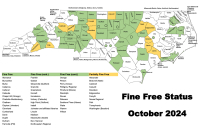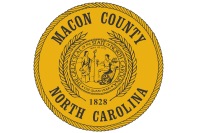National Park offers fieldtrips for students
Take advantage of the Great Smoky Mountains National Park as a classroom through the Spring Parks as Classrooms program, running through May 27.
The fieldtrips are offered to schools or other groups of at least 15 students. The ranger-led outdoor-education programs are free and synced to the North Carolina school curriculum for that grade. Each session enhances classroom learning by using the park’s cultural and natural resources as teaching tools.
The following programs are available:
• Sensory Exploration (kindergarten): Students use their senses to learn about various plants and animals in the park. They will also tour the Mountain Farm Museum and learn about mountain culture and history while speaking with Barney, the “talking barn.” Location: Oconaluftee Visitor Center.
• Have to Have a Habitat (first grade): People and animals all need good habitat. The students learn about the needs of plants and animals at Deep Creek through an in-depth investigation of soil organisms, role-playing bears and scavenger hunts. Students also walk to a picturesque waterfall and spend time quietly reflecting and drawing. Location: Deep Creek.
• Mingus Mill Community (second grade): Students compare and contrast communities past and present as they tour the mill and learn the role corn played in lives of residents over 100 years ago. Students also learn about edible and medicinal plants and make a wooden toy to take home. Location: Mingus Mill.
• Plants Make the Smokies Great (third grade): Thick forests provide classrooms for students to build an understanding of plant adaptations and soil properties. The students conduct hands-on explorations of soil properties, plants and pollinators while learning about life cycles, interrelationships, and biodiversity. Location: Collins Creek Picnic Area.
• Mountain Farm Hands On History (fourth grade): Students study past rural mountain communities and lifestyles by cooking at an open hearth, blacksmithing, examining artifacts, studying exhibits and playing with historic games and toys. Location: Oconaluftee Visitor Center.
• On Top of Old Smoky (fifth grade): Newfound Gap serves as the high-elevation classroom where students learn about sky-islands and spruce–fir ecosystems. Students build their understanding of air pressure, weather and landforms through direct observation and the use of maps, instruments and activities. Location: Clingmans Dome
Exploring the Soils (sixth grade): Students study soil characteristics, food chains and threats to soil health using augers, leaf litter sifting boxes, identification guides and microscopes. Location: Oconaluftee Visitor Center.
• Deep Creek Stream Scientist (seventh-eighth grade): A mountain creek serves as a laboratory for students to study streams. Students conduct chemical water tests and determine stream health by assessing population and diversity of stream organisms. Location: Deep Creek.
• Air Quality Interactions (best suited for seventh grade): Students collect data on snail and lichen populations for on-going monitoring studies looking at air pollution impacts on various natural resources. Location: Clingmans Dome.
• Biodiversity, Salamanders and Insects (Best suited for eighth grade): Student hypotheses guide examinations of insects and salamanders. Using identification guides, students classify their finds and learn how pollution is impacting aquatic and terrestrial habitats. Location: Mingus Mill.
Most activities are half-day programs. Class size is limited to a minimum of 15 and a maximum of 50 students. All units include a pre-visit materials package with logistical information and pre- and post-site lesson plans for use in the classroom. 828.497.1942 or www.nps.gov/grsm/forteachers.





